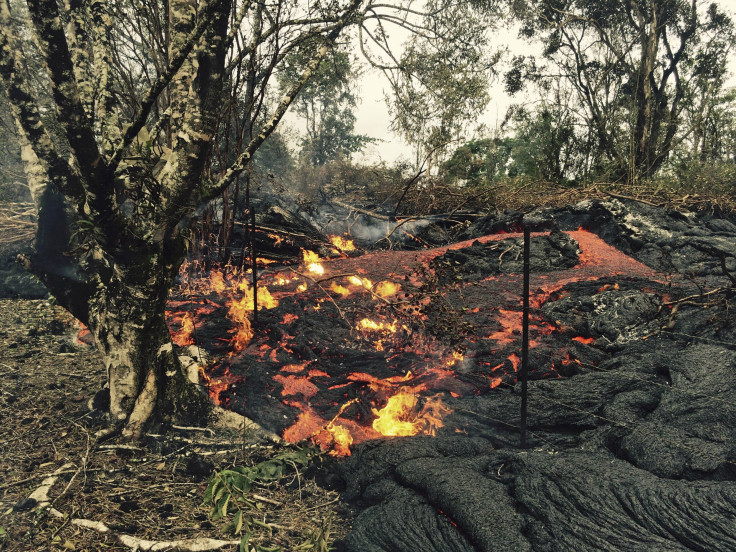Kilauea Volcano Update: Lava Flow Enters Ocean In Hawaii In Stunning Photos

Dangerous lava flowing from Hawaii Volcanoes National Park began leaking into the Pacific Ocean on Hawaii’s Big Island Tuesday morning as onlookers watched. The flow stemming from a May 24 eruption marks the first time lava has reached the ocean along the island's southeastern coastline since August 2013.
The natural event created a startling sight as red-hot lava dropped from soaring cliffs into the ocean, sending smoke and steam billowing into the air. The Hawaiian Volcano Observatory said the lava flow from the Kilauea volcano entered the ocean at 1:12 a.m. Jessica Ferracane, a spokeswoman for the Hawaii Volcanoes National Park, said hundreds of people are expected to show up to watch the unnatural marriage of fire and water.
"It’s 10 miles round trip and there are no services," she told the Honolulu Star Advertiser.
For 33 years, Kilauea volcano in Hawaii has been erupting -- and now its lava has hit ocean! https://t.co/fYdr5813Oh pic.twitter.com/mHNvpJ4nwt
— Treehugger Animals (@TreehuggerTwo) July 27, 2016
The lava transforms into hard, solid rock upon contact with the water and can send debris flying though the area. It also creates an acidic plume that can irritate the skin, eyes and lungs.
It's unclear how long the lava flow will last. The last lava flow to enter the ocean continued off and on from 2011 until 2013.
"Venturing too close to an ocean entry exposes you to flying debris created by the explosive interaction between lava and water," the U.S. Geological Survey website states.
#Lava hits ocean and tours are underway (free content) | https://t.co/1voXRnuCS4 pic.twitter.com/675racyB0r
— West Hawaii Today (@westhawaiitoday) July 27, 2016
Such warnings are unlikely to stop curious travelers. Shane Turpin, owner of Lava Ocean Tours, told The Hawaii Tribune Herald he wanted to charge tourists for a boat ride that would bring them within 100 feet from where the lava enters the ocean. The lava is traveling at a rate of about 40 yards per day.
Pu’u ‘O’o cone of Kīlauea is Hawaii’s most active volcano. It can be a destructive force. It's claimed 189 buildings over the past 30 years, the Christian Science Monitor reported.
Hawaii Volcanoes National Park marks its 100th year on August 1.
Lava flow reaches the #ocean for the first time in 3 years in #Hawaii https://t.co/Z9h11cKe04 via @Strange_Sounds pic.twitter.com/Y2LzEFNhLJ
— Strange Sounds (@Strange_Sounds) July 27, 2016
The 61g lava flow has reached the Pacific Ocean. #Hawaii #volcano https://t.co/WqWvutIass pic.twitter.com/qSgA7wSR0m
— Dr Janine Krippner (@janinekrippner) July 26, 2016
© Copyright IBTimes 2024. All rights reserved.






















